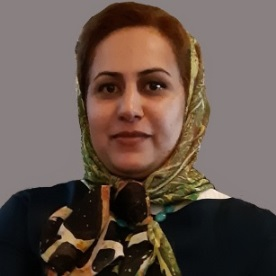Sustainability and Energy Efficiency in Smart Cities and Construction
A special issue of Buildings (ISSN 2075-5309). This special issue belongs to the section "Building Energy, Physics, Environment, and Systems".
Deadline for manuscript submissions: closed (30 November 2022) | Viewed by 24305
Special Issue Editors
Interests: sensing technologies; AI; machine learning; advanced GIS; BIM; digital twins; city analytics methods; digital construction; smart cities; smart construction
Special Issues, Collections and Topics in MDPI journals
Interests: sustainability; energy efficiency; artificial intelligence; smart city; digital twin; applications of the internet of things; advanced GIS; LiDAR; BIM; digital technology in infrastructure; mixed reality applications; information and communication technology; spatial analysis and visualization; authentic education
Special Issues, Collections and Topics in MDPI journals
Special Issue Information
Dear Colleagues,
Research on topics of sustainability and energy efficiency is crucial for cities to improve the quality of life for generations in an era of climate change and the global warming trend. While research shows that the amount of energy used during the COVID-19 pandemic has changed dramatically in many cities, the global warming trend continues:
“The combined global average temperature over the land and ocean surfaces for November 2020 was 0.97 °C (1.75 °F) above the 20th century average of 12.9 °C (55.2°F). This was the second warmest November in the 141-year global record, behind the record warm November set in 2015 (+1.01 °C/+1.82 °F).” [https://www.ncdc.noaa.gov/sotc/global/202011 and https://www.co2.earth/global-warming-update]
It is expected that the post-pandemic recoveries in construction areas and cities will consider improving energy efficiency in both domains, considering the lessons learned for possibilities of working remotely that reduce energy consumption during commuting and office use. Investigations on this topic can be one of such topics encouraged for inclusion in this Special Issue. We invite all scholars of the field, who have investigated the following topics, to contribute to this Special Issue through submission of articles detailing their recent research or case studies:
- Implementation of innovative approaches, proposed novel methods, or tools that can be used for monitoring, measuring, and managing environmental issues (as well as social and economic challenges) in construction and cities at the construction, building, or city scale.
- Sustainable practices, case studies, technology development, and/or policies developed for smart construction and smart cities.
- Review papers and conceptual developments discussing the role of regulatory frameworks and complementary policies for further implementation of sustainable cities and building initiatives.
The following useful references in different areas, such as sustainability and digital technologies (e.g., BIM and GIS), are recommended:
Global warming and sustainability:
- Liang, Y., Gillett, N.P. and Monahan, A.H., 2020. Climate model projections of 21st century global warming constrained using the observed warming trend. Geophysical Research Letters, 47(12), p.e2019GL086757 . https://doi. org/10.1029/2019GL086757
- Sepasgozar, S.M., Li, H., Shirowzhan, S. and Tam, V.W., 2019. Methods for monitoring construction off-road vehicle emissions: a critical review for identifying deficiencies and directions. Environmental Science and Pollution Research, 26(16), pp.15779-15794. https://doi.org/10.1007/s11356-019-05003-6
- Sepasgozar, S.M. and Blair, J., 2019. Measuring non-road diesel emissions in the construction industry: A synopsis of the literature. International Journal of Construction Management, pp.1-16. https://doi.org/10.1080/15623599.2019.1573479
- Sepasgozar, S.M., Hui, F.K.P., Shirowzhan, S., Foroozanfar, M., Yang, L. and Aye, L., 2021. Lean Practices Using Building Information Modeling (BIM) and Digital Twinning for Sustainable Construction. Sustainability, 13(1), p.161. https://doi.org/10.3390/su13010161
Digital technology applications in construction and smart cities:
- Sepasgozar, S.M., Hawken, S., Sargolzaei, S. and Foroozanfa, M., 2019. Implementing citizen centric technology in developing smart cities: A model for predicting the acceptance of urban technologies. Technological Forecasting and Social Change, 142, pp.105-116. https://doi.org/10.1016/j.techfore.2018.09.012
- Shirowzhan, S., Sepasgozar, S.M., Edwards, D.J., Li, H. and Wang, C., 2020. BIM compatibility and its differentiation with interoperability challenges as an innovation factor. Automation in Construction, 112, p.103086. https://doi.org/10.1016/j.autcon.2020.103086
- Ramirez Lopez, L.J. and Grijalba Castro, A.I., 2021. Sustainability and Resilience in Smart City Planning: A Review. Sustainability, 13(1), p.181. https://doi.org/10.3390/su13010181
Suggested areas:
- Sustainable smart construction and cities
- Digital technologies (such as BIM-based and web tools as well as GIS and digital twin-enabled energy management systems) for energy efficiency
- Waste construction and demolition
- Recycled green building materials, structural analysis, and architectural design considering sustainability approaches
- Stakeholder management for sustainable construction and resilience cities
- Blockchain, artificial intelligence, and Internet of Things (IoT) network applications for a circular economy in the construction, smart city, and engineering contexts
- Noise analysis and management
- Carbon emission in construction and smart cities
- Big data-driven sustainable city and infrastructure
- Data fusion strategies for energy efficiency in smart cities and individual buildings
- Lean practices using building information modeling (BIM) and digital twinning
Dr. Sara Shirowzhan
Dr. Samad M. E. Sepasgozar
Guest Editors
Manuscript Submission Information
Manuscripts should be submitted online at www.mdpi.com by registering and logging in to this website. Once you are registered, click here to go to the submission form. Manuscripts can be submitted until the deadline. All submissions that pass pre-check are peer-reviewed. Accepted papers will be published continuously in the journal (as soon as accepted) and will be listed together on the special issue website. Research articles, review articles as well as short communications are invited. For planned papers, a title and short abstract (about 100 words) can be sent to the Editorial Office for announcement on this website.
Submitted manuscripts should not have been published previously, nor be under consideration for publication elsewhere (except conference proceedings papers). All manuscripts are thoroughly refereed through a single-blind peer-review process. A guide for authors and other relevant information for submission of manuscripts is available on the Instructions for Authors page. Buildings is an international peer-reviewed open access monthly journal published by MDPI.
Please visit the Instructions for Authors page before submitting a manuscript. The Article Processing Charge (APC) for publication in this open access journal is 2600 CHF (Swiss Francs). Submitted papers should be well formatted and use good English. Authors may use MDPI's English editing service prior to publication or during author revisions.






